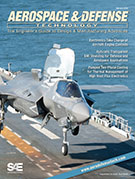Magazine

Automotive Engineering: September 1, 2016
2016-09-01
Solving the Greenhouse Gas puzzle While automakers and policymakers debate the TAR, engineers and product planners prepare for the steep climb to meet GHG and CAFE rules beyond 2022. Revving up thermal characterization in the component lab The latest generation of high-speed infrared cameras can capture airbag deployments and other fast-moving actions quickly and accurately. C3 consortium aims for soot solution A newly formed group of companies led by CFD specialists Convergent Science targets exhaust particulate reduction in the combustion chamber. Inside the autonomous vehicle With less focus on driver needs, comfort, safety, and occupant productivity will become key. Editorial: Bad gas?

















